A Complete Guide to Lima, Peru – Travel Tips and 3 Day Lima Itinerary
If you’re heading to Peru, then visiting its capital city, Lima, is a must. You can spend as little or as long as you wish, but about 3 days in Lima would give you the greatest chance to see the best of the city.
Lima is a city that’s got just about everything for an unforgettable city break. Do you want to learn about history? There’s plenty in the Historic Centre, not to mention the ancient pyramid in the middle of the upscale Miraflores District. Fancy seeing some murals and street art? Lima’s Barranco district has got you covered. Do you want to relax in parks and enjoy some nature in a busy city? There are plenty of unique parks in Lima, some where you can even play with cats. Is finding great restaurants and cafes with good food your priority. Well, there’s no shortage of places in Miraflores or Barranco. Perhaps shopping is your weakness? Then head to a unique shopping mall built into the side of the cliff overlooking the Pacific Ocean.
If those weren’t already enough reasons to spend a few days in Lima, then you can even do some adrenalin-fuelled activities in the city, such as paragliding or surfing.
If you’d like to see what we got up to in Lima, then make sure to watch Part I and Part II of our Lima videos on YouTube. For more Peru videos, check out the Peru Playlist on our YouTube channel.
Disclosure: This post may contain affiliate links, which means we may receive a small commission if you click a link and purchase something. Clicking these links won’t cost you anything, but it will help us to keep this site up and running! Learn more about our affiliate policy.
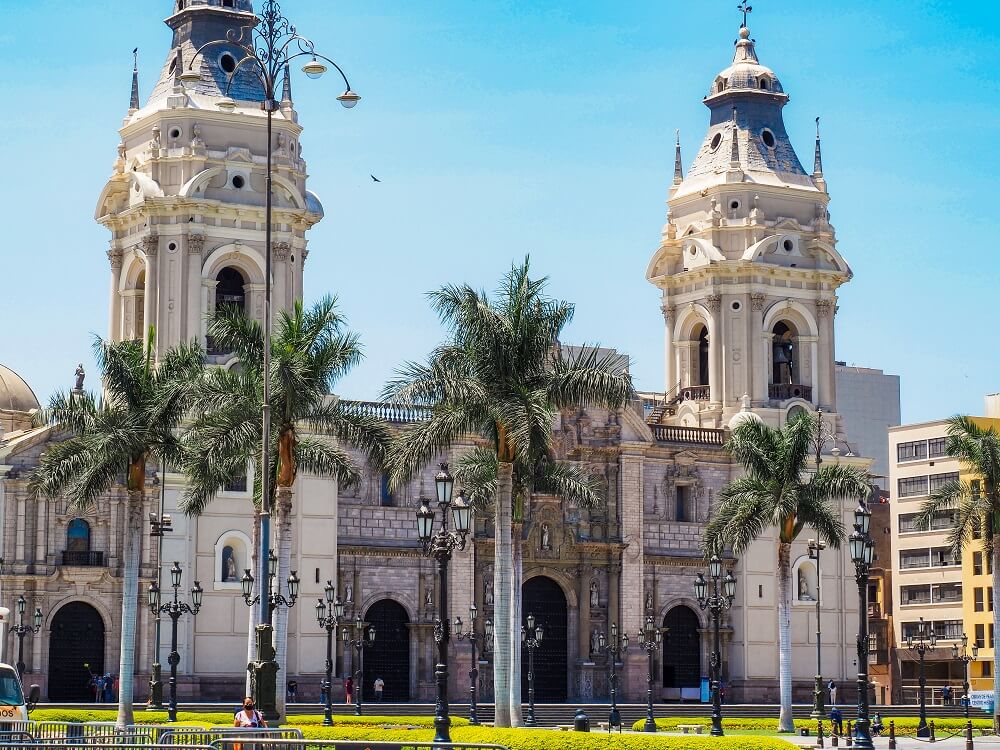
All You Need to Know About Lima, Peru
Probably the best way to introduce you to Lima is to share some interesting facts about it:
- Lima was founded on the 18th January 1535 by Spanish conqueror Francisco Pizarro.
- The city was called La Ciudad de los Reyes which translates as “The City of Kings.” It became the capital of the Viceroy of Peru until Peru gained independence in 1821. The city then became the capital of the Republic of Peru.
- Lima is the largest city in Peru and the fifth-largest city in South America.
- It is also the second most populated city in South America. Nearly a third of Peru’s entire population lives in Lima.
- Lima is located on a desert strip between the Pacific Ocean and the Andes Mountains. It makes Lima the second largest desert capital city after Cairo in Egypt.
- Being a desert city, Lima never experiences proper rain, only the occasional drizzle. This makes the city one of the driest capitals in the world.
- Although located in a desert, Lima’s climate is quite unique. On one side, the cold Humboldt Current produces high humidity with clouds and mist. On the other side, the Andes Mountains block tropical conditions from the Amazon basin. They also create several micro-climates in the city.
- You can visit an ancient Peruvian pyramid in the middle of an upscale area of the Miraflores district.
- The city is home to one of the smallest churches in the world, the Chapel Our Lady of the Rosary, located in Rimac district.
- You’ll see a lot of black vultures circling the sky. Despite their bad reputation, these ‘gallinazos’ are actually cleaning up the city.
Our Top Travel Resources to Visit Lima
- ✈️ Search for flights to Lima on Skyscanner
- 🛏️ Find your accommodations with Booking.com
- 🎫 Book an organised tour in Lima with GetYourGuide
- 🛡️Don’t forget to buy travel insurance via SafetyWing
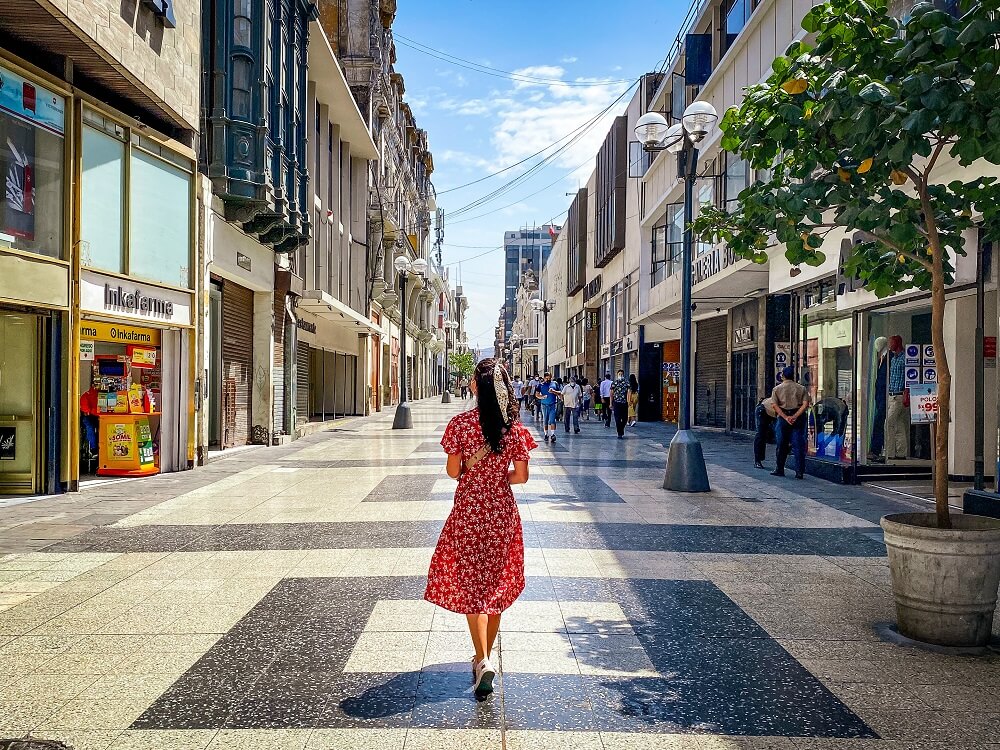
Is Lima Safe?
Lima is the biggest city in Peru, and just like any big city in the world, it also means that crime will naturally be higher. However, this doesn’t mean that you should skip visiting the capital. Quite the opposite. We think you should definitely spend at least 3 days in Lima, because there’s a lot of interesting things to do there.
Although we felt safe during our visit and I’m sure you will too, it’s good to be aware of a few things prior to your visit. Below, we list a few health and safety precautions you should bear in mind before and during your travels around Lima. However, for more official safety advice please visit the Government’s website.
Have Travel Insurance (Our Top Lima Travel Tip)
One thing that many of us often overlook is travel insurance. However, it is a very crucial part of your travel planning. You just never know what might happen during your trip. So, having good travel insurance that protects you in case of cancellations, theft, injury, and illness is more important than ever these days.
We appreciate that this is something that you have to pay for and in most cases you’ll never have to use. However, if something does happen, it’ll quickly become one of the best investments you’ll make.
These days we never go anywhere without travel insurance, so make sure to buy one prior to your trip too. There are many different companies out there offering different levels of coverage depending on your needs. For reference, we use SafetyWing which offers great coverage at a much more affordable price than most other insurances. Plus, you can pay for it monthly too!
Our favourite feature of SafetyWing is that they allow you to sign up even if your trip has already started which many other companies wouldn’t do.
Crime Related Lima Travel Advice
Just like in any densely populated city in the world crimes are not uncommon. Whilst we never felt unsafe during our 3 days in Lima, here are a few safety tips based on our experience and research.
- Don’t walk alone at night. Whilst some areas such as Miraflores and Barranco are pretty safe even at night, if you’d need to walk a longer distance on your own get an Uber / Cabify instead.
- Lima has 43 districts or barrios. Many of them are safe, but just as many are best avoided by tourists, especially at night. It’s even suggested that you shouldn’t be walking around at night in the Historic Centre, which is buzzing with tourists during the day.
- Try to avoid using public transportation during rush hours. It’ll be super crowded and you’re more likely to get pickpocketed.
- Always put your valuables away when using public transportation or walking somewhere less touristy. Even in more touristy areas, I suggest keeping an eye on your valuables such as phones and cameras. We used money belts to store our cash and travel cards and always felt more secure with these.
- You’ll see that many people wear their backpacks on their front on public transport and in more crowded places.
- Book your accommodation in safe neighbourhoods, so you won’t have to worry about your belongings when you’re out exploring.
Health Related Lima Travel Tips
One thing you want to avoid on your holiday is getting sick, especially in a foreign country where you might not even speak the language. Here are a few of our personal health related tips to reduce the risk of getting ill. For more official information, check out Peru-specific health advice from the National Travel Health Network and Centre (NaTHNaC).
- Avoid drinking the tap water. I suggest boiling your water, using a filtered bottle such as WaterWell or buying bigger bottles of water (4 or 6 litres) and filling up a reusable water bottle. This will help you to reduce your plastic waste too.
- Whilst you should avoid tap water, make sure to actually drink enough purified water to avoid dehydration and other issues such as altitude sickness, especially if you’re heading to the Andes after Lima.
- There are many pharmacies in Lima where you can buy medicines, so only bring your prescribed medication.
- I suggest buying some altitude sickness tablets in Lima if you’re heading to higher altitudes afterwards.
Natural Disaster Related Lima Travel Tips
Natural disasters are something you won’t be able to avoid if they occur during your stay. However, knowing what to do in case of an emergency is important.
Lima is located in a subduction zone which means that the city is prone to frequent earthquakes. Whilst we didn’t feel any during our one week in Lima, we did experience a 4.7 magnitude one whilst hiking in the Colca Canyon which caused a lot of damage to the area.
We recommend reading the US Federal Emergency Management Agency’s advice about what to do before, during and after an earthquake.

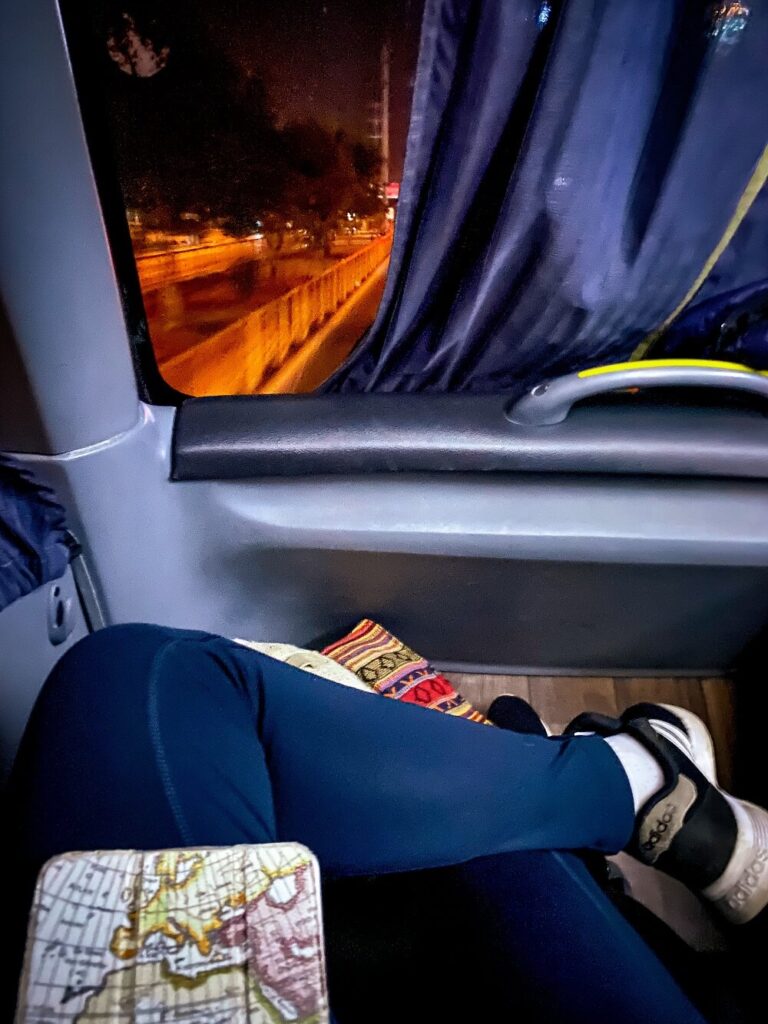
How to Get to Lima?
By plane – Obviously the easiest and least time consuming way to reach Lima is by flying to Jorge Chavez International Airport. Depending on where you’re coming from, there are many direct flights between Lima and other major cities in North, South and Central America. From Europe you can fly direct to Lima from Amsterdam, Paris or Madrid.
Find Flights to Lima ✈️
By bus – If you’re coming from neighbouring countries, then you can opt to take an international bus to Lima too. There are a lot of different companies that provide these services such as Peru Hop. Transzela and Grupo Ormeño.
Bus travel between countries in South America is a popular and affordable way between locals and backpackers alike. Travelling by bus will also give you the chance to stop at other places of interest along the way. Our main online sources that helped us to find bus routes and companies operating to and from our next destination were Busbud.com, Rome2Rio and Moovitapp.
🚌 Are you planning your next destination in Peru? If so, then make sure to read our detailed guide on how to travel by bus in Peru.
How to get from Lima Airport to Lima city?
Lima’s airport is located around 15km away from the Miraflores district, where most tourists usually stay. Whilst you can get to Miraflores by public buses, it would take you over an hour with possibly a change or two.
For this reason, we recommend booking an official taxi at the airport. Just before you get out of the arrivals area there will be a few different options where you can book your journey. We booked it with Green Airport S.A and it cost us around S/.60 (~US$15 / £13). They normally have a set fare depending on which district you’re travelling to. The journey can take anywhere between 30 to 45 minutes depending on traffic.
Top Tip – Make sure to always get an official taxi even if it costs you a little extra. You’re always the most vulnerable when arriving to a new country.
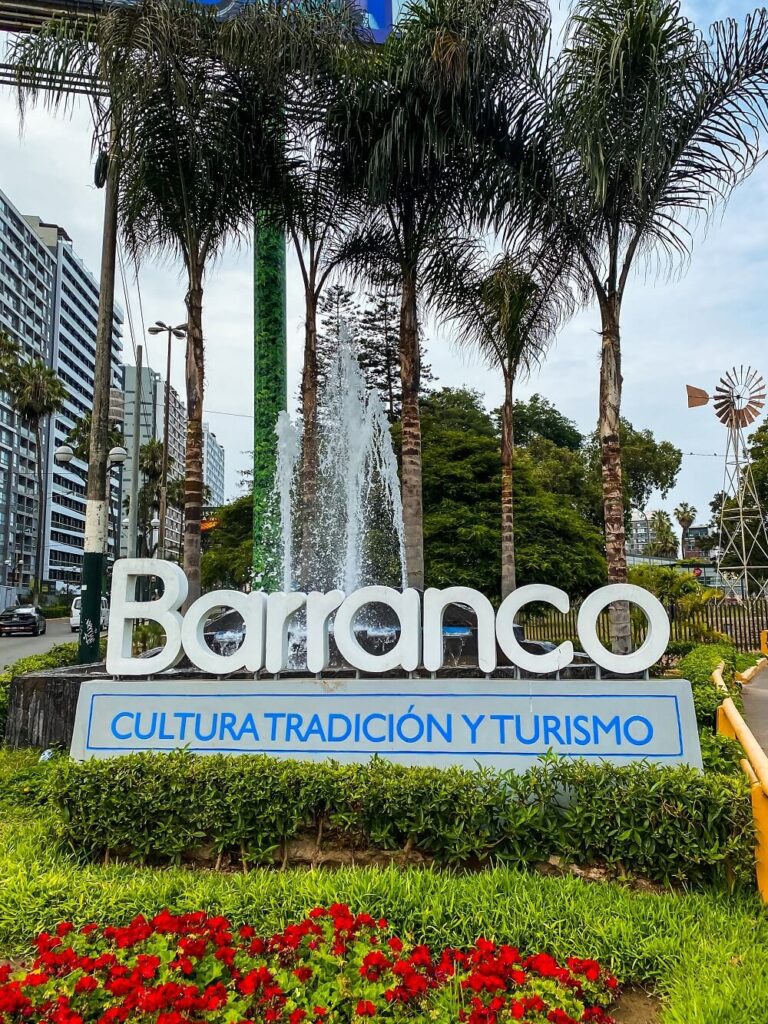
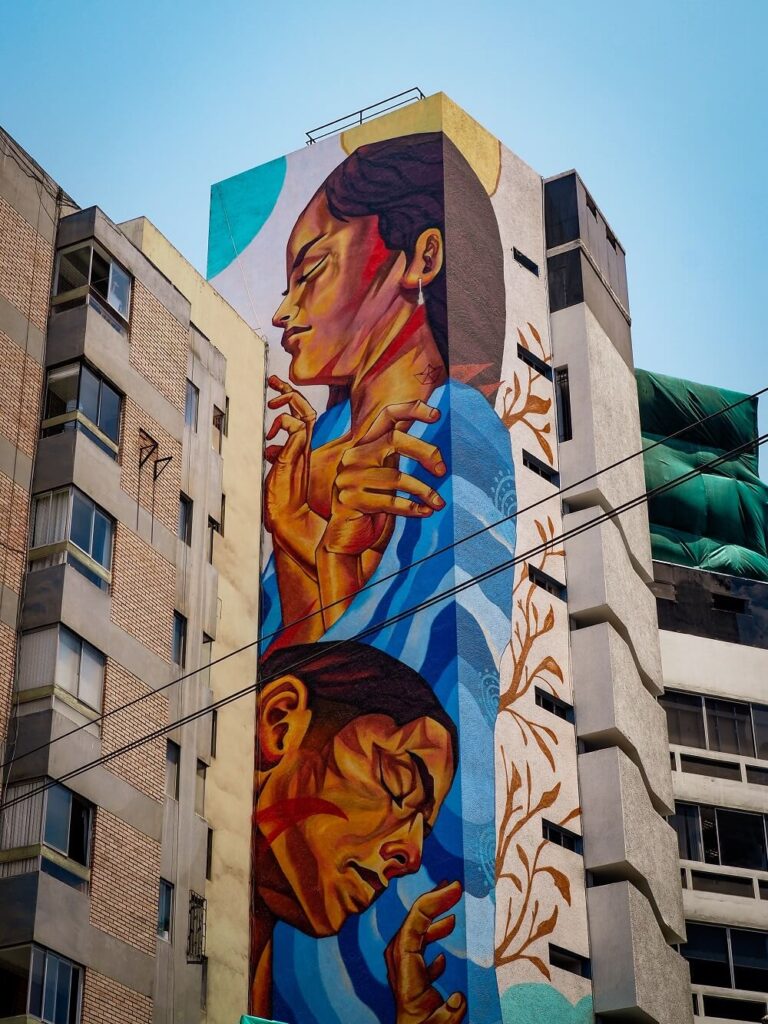
Where to Stay in Lima?
Lima has plenty of safe districts but also many less-safe neighbourhoods for tourists. Many people stay in one of the following areas: Miraflores, Barranco or San Isidro.
These districts are filled with hotels and hostels catering for all interests and budgets, so you’ll find a lot of foreigners in these areas. They are also packed with cool cafes, bars and restaurants. Many of the main tourist attractions are also located in these neighbourhoods, apart from the Historic Centre. For reference, we stayed in the centre of Miraflores and we felt perfectly safe.
Based on our research prior to visiting Lima, it’s advised not to stay in the Historic Centre (Centro Historico), as it can get less safe for tourists at night.
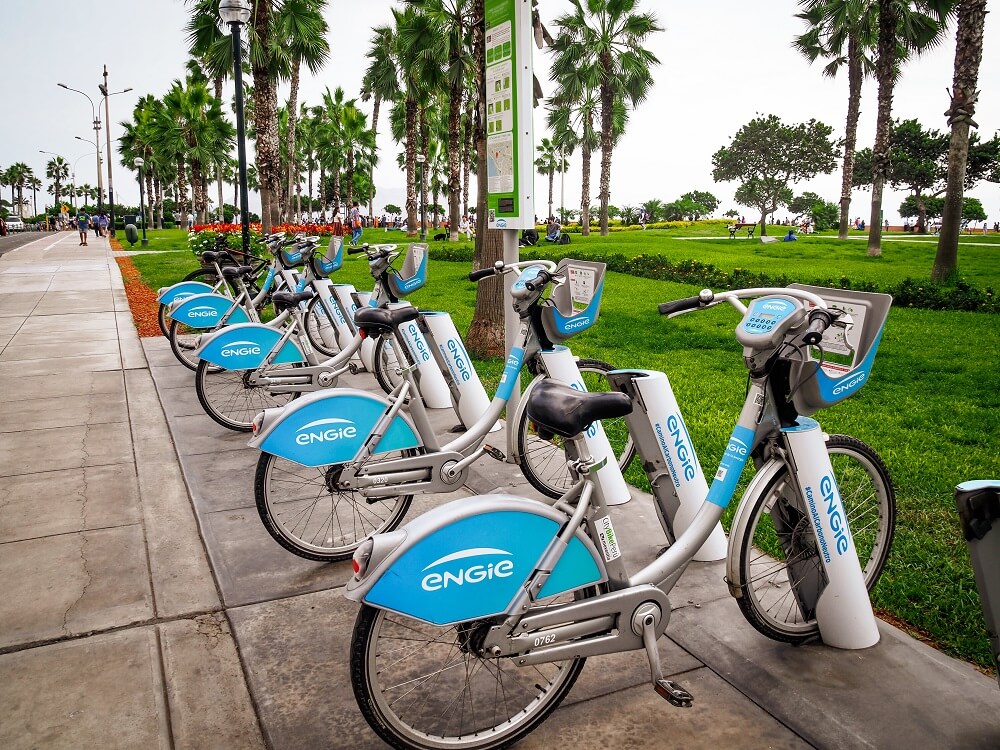
Best Ways to Move Around Lima
Active Travel
On foot – Whenever we can, we enjoy exploring a new place on foot. You can discover so much more than by taking taxis everywhere. Luckily, the main districts of Lima such as Miraflores and Barranco are both safe and walkable areas. The main attractions are relatively close to one another, so make sure to put some comfortable shoes on and see some parts of Lima on foot.
If you’ve just arrived to the city, it’s always a good idea to join a walking tour where you won’t just see, but also learn, a lot about Lima.
By Bike – If you don’t want to explore only on foot, then why not rent a bike instead? Lima is a relatively flat city and has great cycle lanes, so it’s easy and safe to explore it by bike. There is a great public bike sharing service called CityBikeLima which offers very affordable bike renting options.
Alternatively, for an even more fun experience you can join an organized bike tour. This is an excellent way to explore the city and learn more about it.
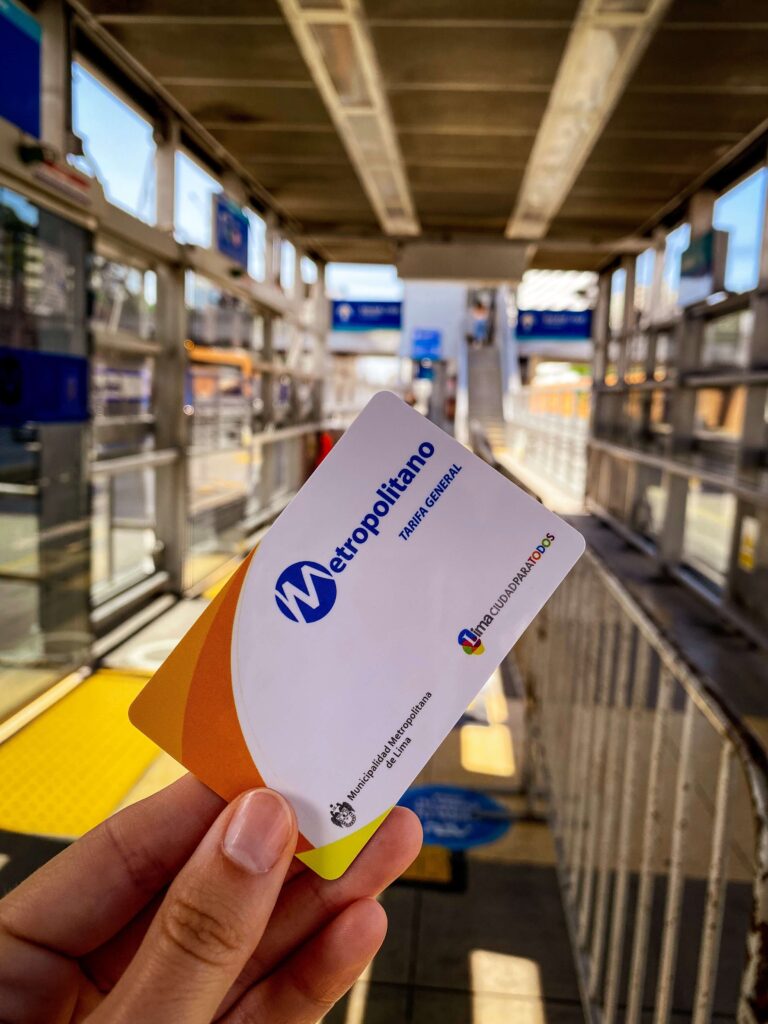
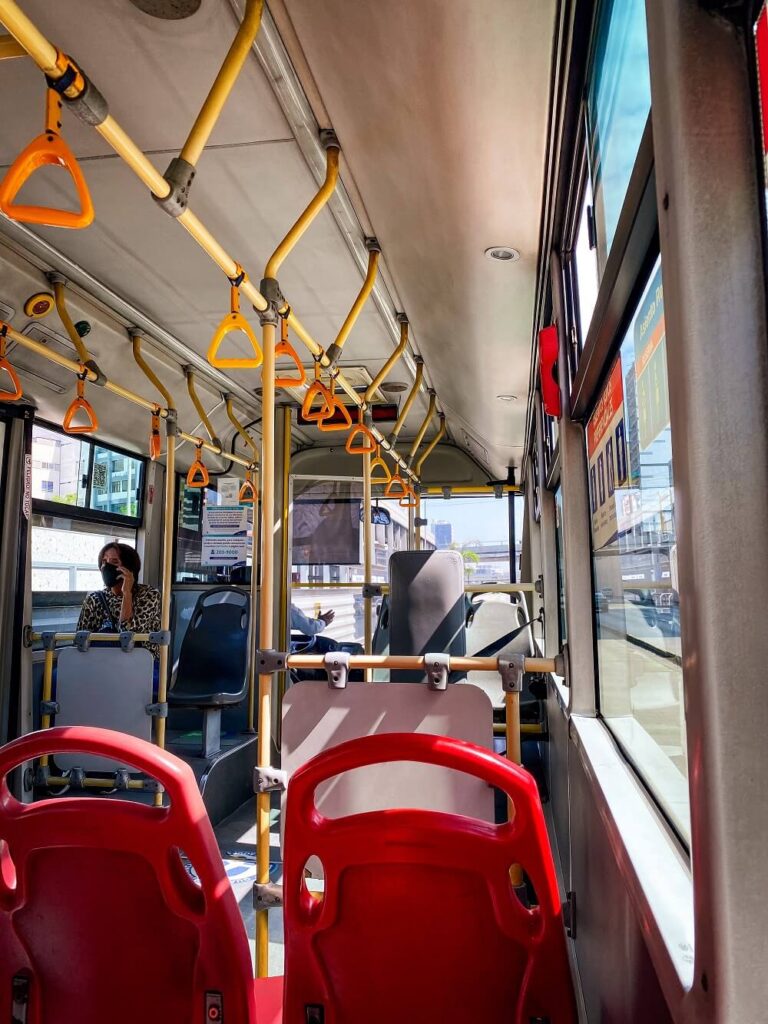
Public Transport
Metropolitano – If you’re visiting other districts in Lima, then we recommend using public transport. El Metropolitano is Lima’s bus rapid transport system (BRT) that’s been operating since 2010. It allows you to get from A to B very quickly. If you’re staying in either the Miraflores or Barranco Districts of Lima, then the best way to get to Centro Historico will be with this bus.
To use the bus, you’ll have to buy a card first which costs less than S/.5 ($US 1.3 / £1). Multiple people can use the same card, so no need to buy more than one card. Then you’ll have to top up the card with some credit and you can then use this card to enter the bus platforms.
Metropolitano has 16 bus routes and nearly 80 stops in Lima. So, I recommend planning your journeys in Moovitapp or Google Maps to see which bus stop is the closest to where you are staying. For example, if you’d like to visit the Historic Centre, you should get off at Estación Central. From there, you can easily explore this area on foot.
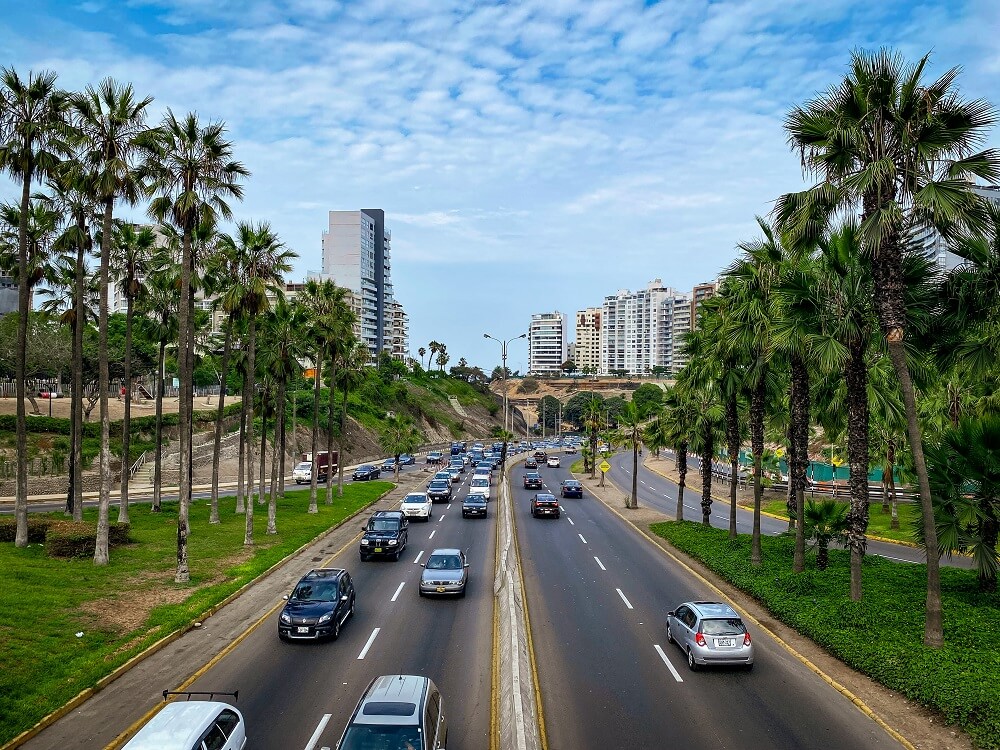
Private Vehicle
Uber / Cabify – Nowadays Uber is probably the most common way to move around in cities across the world. You can also download the Cabify app which works the same as Uber in South America. Both Uber and Cabify in Lima can be relatively cheap, really depending on how far you’re travelling and the time of day. It’s easy to use and you can see how much your ride will cost before you book it. Having a local SIM card will make it easier to book and follow your route.
Taxi – You can also use taxis to get around the city. You have to make sure that you use an official taxi, which are normally yellow or white. Unfortunately, many taxis could look like official taxi cabs but they aren’t. So you have to be cautions when flagging down one on the street. Whenever you can we recommend booking a taxi with your hotel / hostel. Especially going to / from the airport or bus stations. However, if you have to flag down one, make sure to agree the destination and price in advance and in Soles, Peru’s currency. Also worth noting is that during rush hours the fare will be higher.

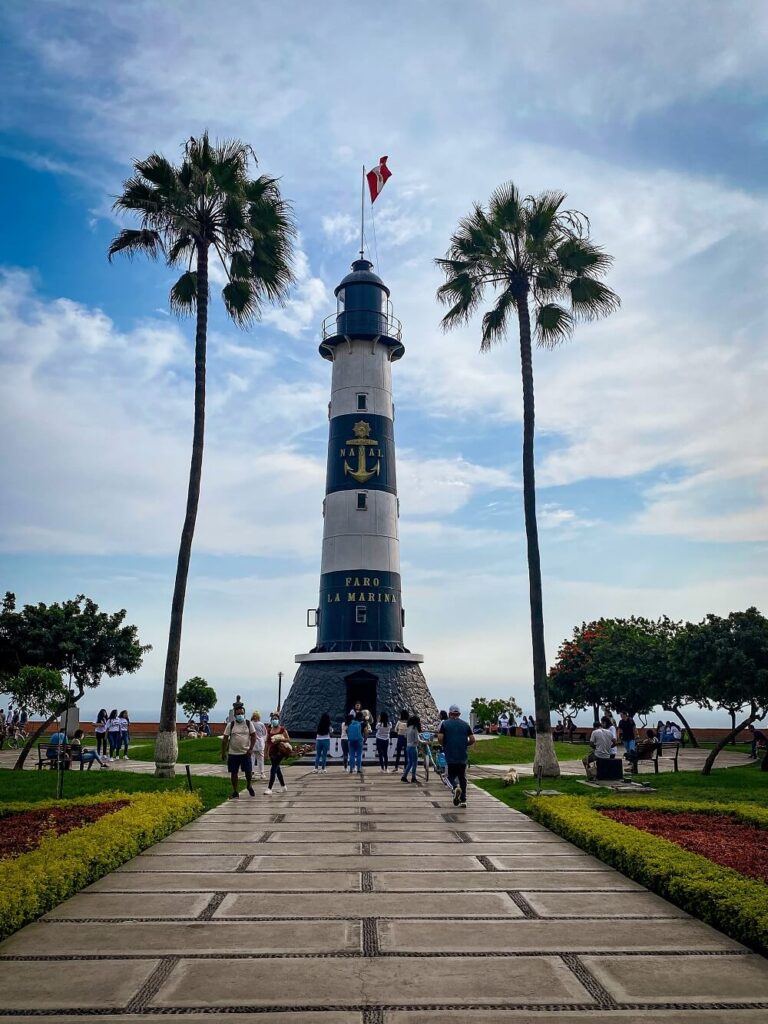
How to Spend 3 Days in Lima, Peru
Day 1: Explore the Miraflores District of Lima
You should start your 3 days in Lima by spending a day in the Miraflores district. You can do just about anything in this neighbourhood from learning about history, relaxing in beautiful parks, doing some water sports and other adventures. Here are a few things you shouldn’t skip in Miraflores:
- Huaca Pucllana, the Pyramid of Lima. Located in the middle of the Miraflores district is the ancient Peruvian pyramid known as Huaca Pucllana. You can take a guided tour through the site for S/.15 (~$US4 / £3). Visiting the pyramid is a must in Lima.
- Parque Kennedy. A must visit park for cat lovers. There are dozens of them in this park who are looked after by a team of volunteers.
- Malecón de Miraflores. It is a set of boardwalks that run along the cliff edges with stunning views of the Costa Verde, also known as the bay of Lima. It has plenty of points of interest along its length making it a top thing to do when you only spend 3 days in Lima.
- El Parque Del Amor, Lima’s ‘Love Park’. The park was built to celebrate all forms of love. Its main feature is the ‘El Beso’ (The Kiss) statue and curved benches decorated with colourful mosaics that were inspired by Parc Güell in Barcelona.
- Larcomar Shopping Mall. Built into the cliffs in perfect harmony with nature and overlooking the Pacific Ocean, the shopping mall is something you shouldn’t miss during your 3 days in Lima.
- La Marina Lighthouse. This 22m tall active lighthouse was built in 1900. It’s the perfect place to watch the sunset from.
Additional activities to consider in the Miraflores district would be to rent a bike, go surfing or paragliding.
Click here to read our detailed guide about the best things to do in the Miraflores District of Lima.
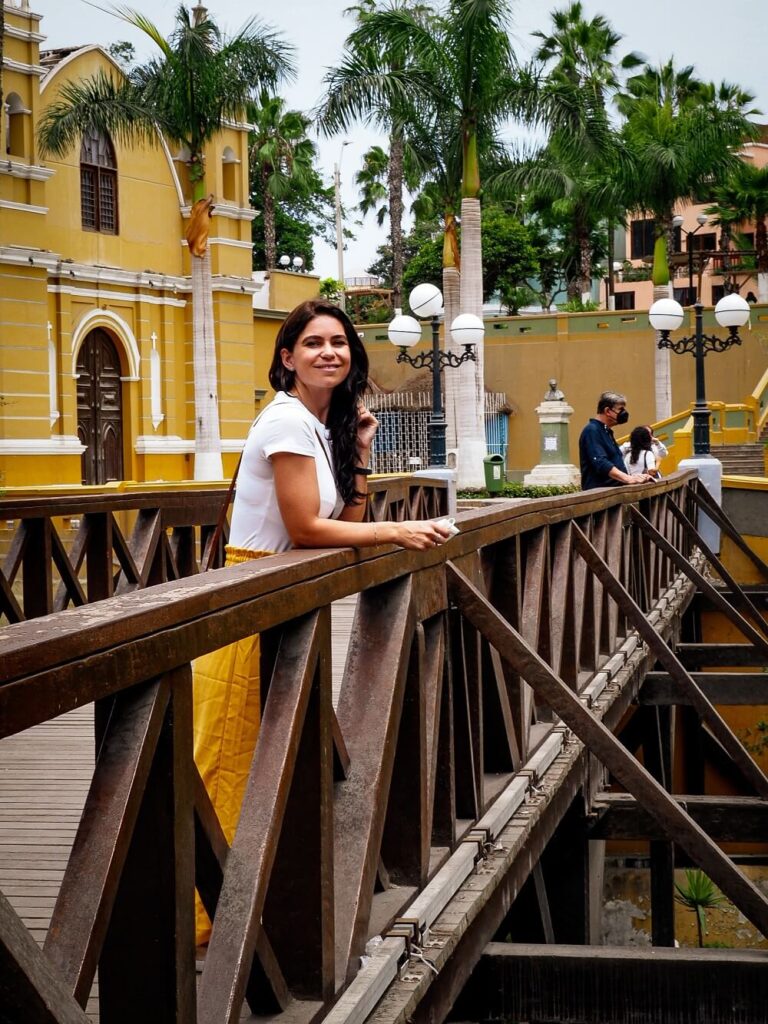
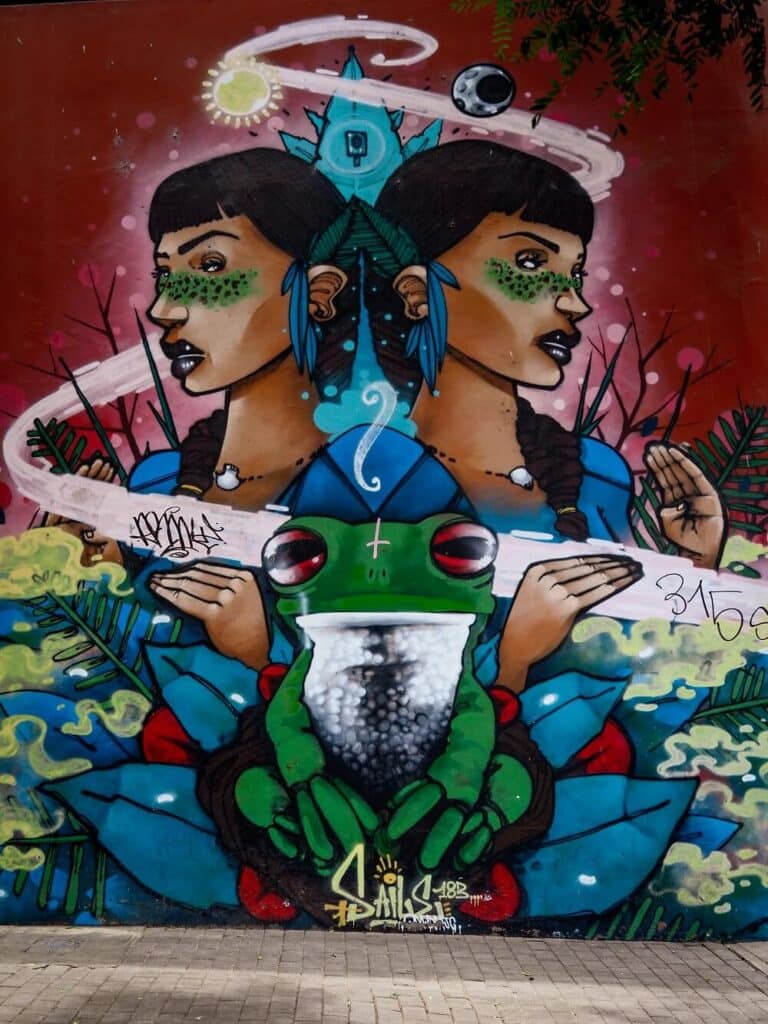
Day 2: Walk Around the Barranco District of Lima
Barranco is known as the ‘SoHo’ of Lima and is packed with renowned art galleries, boutiques and trendy coffee shops and bars. Whether you’re into history, art, architecture or just want to try out some trendy restaurants and cafes, you have to visit this neighbourhood during your 3 days in Lima. Below are a list of things you should do in Barranco:
- Bridge of Sighs. The wooden bridge was built in 1876 to join the two sides of the gorge. It used to be a meeting point for philosophers and poets before it became a meeting point for young couples.
- Murals and Street Art. The streets of Barranco are like an outdoor art gallery filled with amazing murals and street art. If you love street art then you must fit this in to your 3-day Lima itinerary.
- Bajada de los Baños. You can make your way down this old walkway underneath the Bridge of Sighs. It was once used by local fishermen to access the beach. However, today it is filled with hip bars, restaurants, cafes and street art.
- Art Gallery or Museums. Barranco is the area to go if you’d like to visit an art gallery or museum such as Jade Rivera’s Studio, MAC, Museo Pedro de Osma or the Electricity Museum.
Click here to read our detailed guide about the best things to do in the Barranco District of Lima.
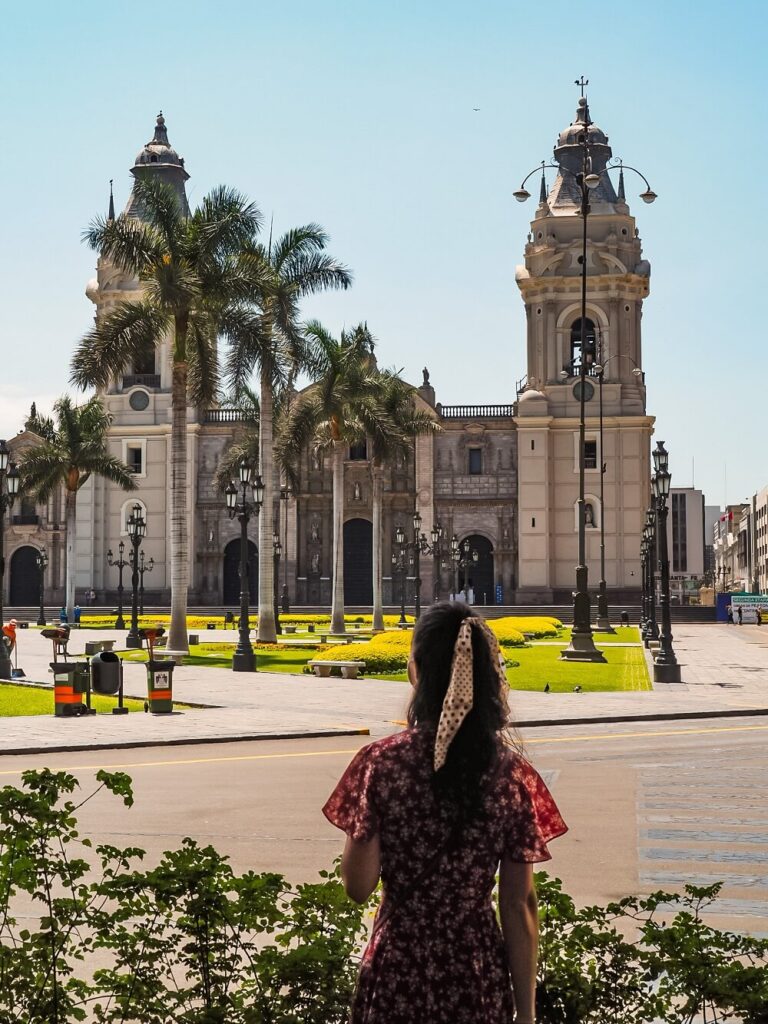
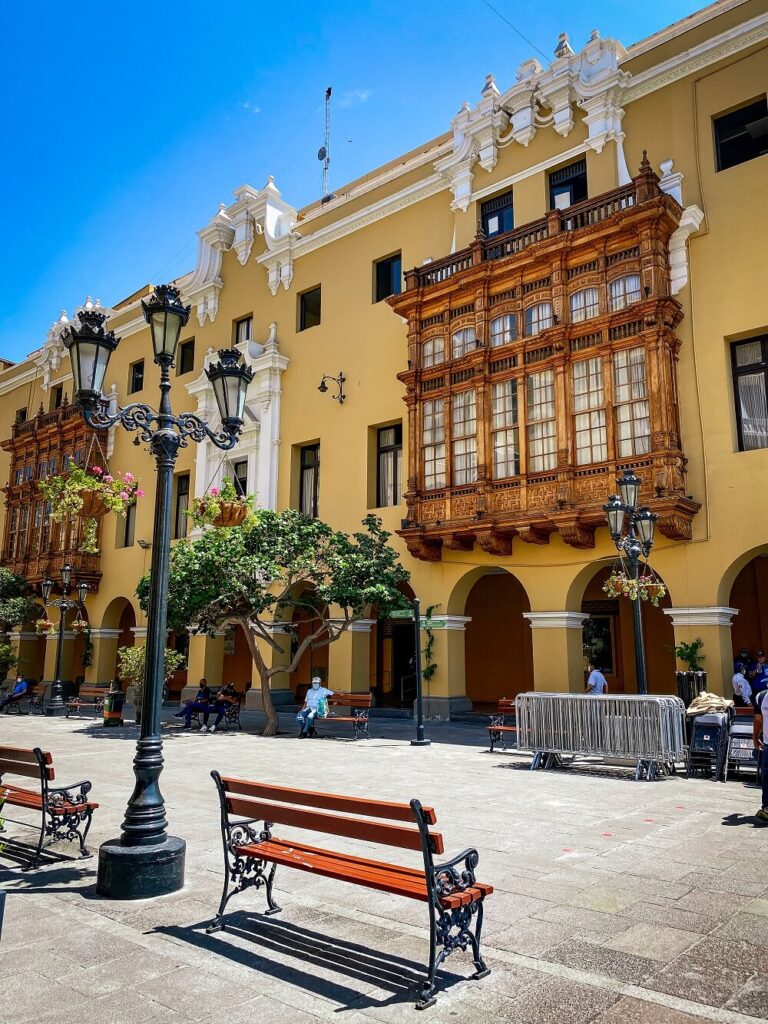
Day 3: Visit the Historic Centre (Centro Historico) of Lima
You really can’t skip visiting the Historic Centre of Lima during your 3 days. Here you can learn a lot about the city’s history and also find some of the most impressive architecture dating back to the 16th century. Here are a few places to add to your itinerary:
- Plaza Mayor. Lima’s main plaza was at the foundation of the ‘City of the Kings’ in 1535. It is also the place where Peru’s independence was declared.
- Church and Convent of San Francisco. The Baroque-style Roman Catholic church and monastery has a beautiful library and underground catacombs. You can take an unforgettable guided tour for S/.15 (~US$4 / £3).
- Magic Water Circuit. Possibly the coolest way to end your 3 days in Lima is a visit to the Magic Water Circuit. For only S/.4 you can enjoy 13 interactive fountains that are illuminated every night with an impressive lightshow at the biggest fountain.
Click here to read our detailed guide about the best things to do in the Historic Centre of Lima.
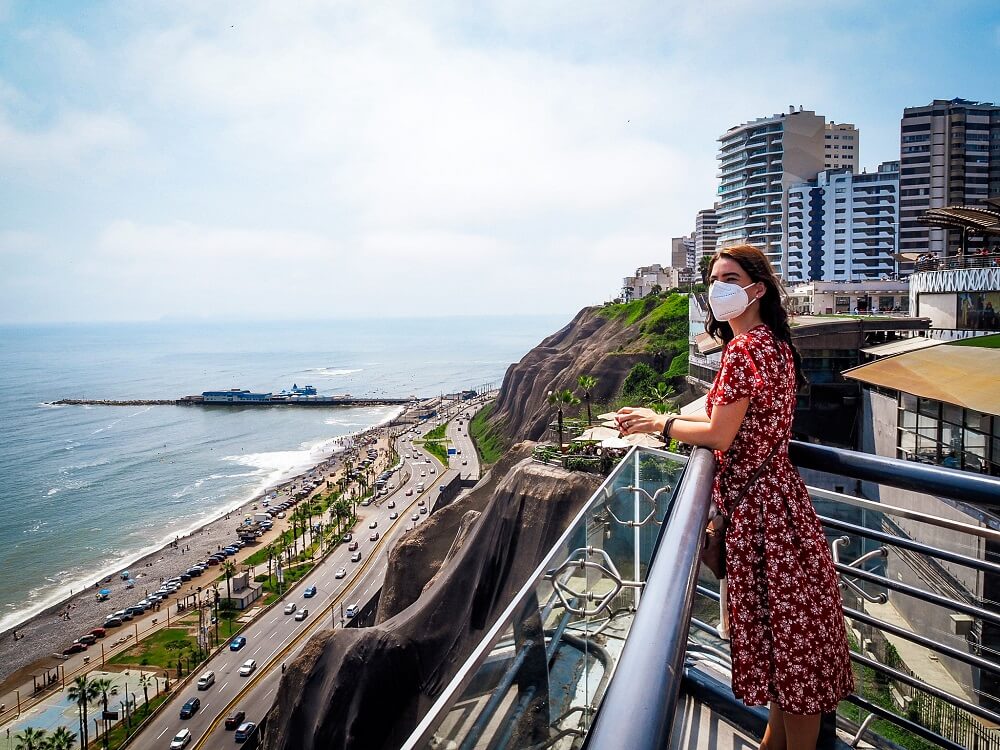
Final Thoughts on 3 Days in Lima Itinerary
As you can see, the capital is packed with amazing things to do, so 3 days in Lima can be easily filled. Whether you’re into history, street art, nature, water sports or other adventures, you can definitely do all of them in this city. I think our favourite neighbourhood was Miraflores where we could see many of Lima’s best sights. Of course, exploring the bohemian Barranco district and visiting the Historic Centre allowed us to see some amazing street art and learn more about Lima’s history.
Have you ever been to Lima before? How much of the city did you manage to explore? Let me know in the comments below.
Now, let your adventure begin,

Our Top Travel Resources
Accommodation: For hotels we always use Booking.com and Hostelworld for hostels. We also book longer stays on Airbnb or Vrbo.
Flights: To find the best flight prices we always check Skyscanner, Google Flights or WayAway. Then we also check the airlines’ websites too for comparison.
Car Rentals: We use Discover Cars when we want to rent a car as it compares local, national and international companies.
Activities: If we book organised tours we always check either GetYourGuide or Viator.
Foreign Currency: Whenever we can we prefer to pay in local currency and for that we always use our Wise card. We can easily withdraw money from the ATM or pay by card at most shops and restaurants.
Travel Insurance: We never go anywhere without travel insurance. You never know what will happen on your trip, so good travel insurance like SafetyWing can protect you in case of injury, illness, theft and cancellations.
eSIM and VPN: To get data abroad we use Airalo which is an app that allows you to download a prepaid eSIM to your phone in over 190 countries. Make sure to have a VPN to avoid hackers accessing your personal data when using public WIFI. We use Surfshark which is the only VPN that offers one account on unlimited devices.
Remember…It all starts with a Pin…
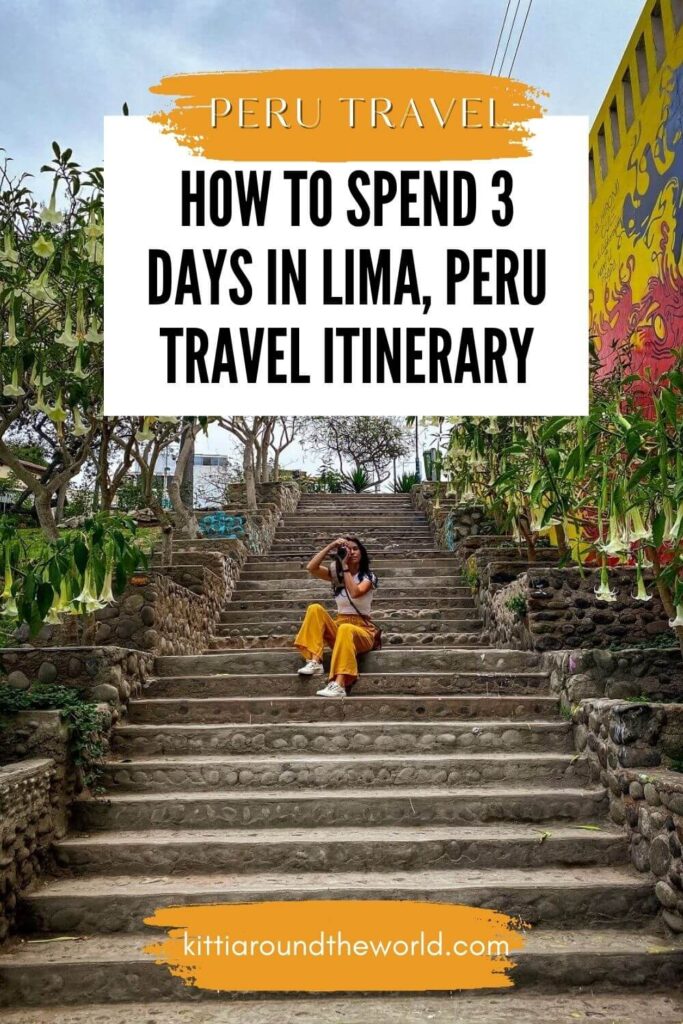
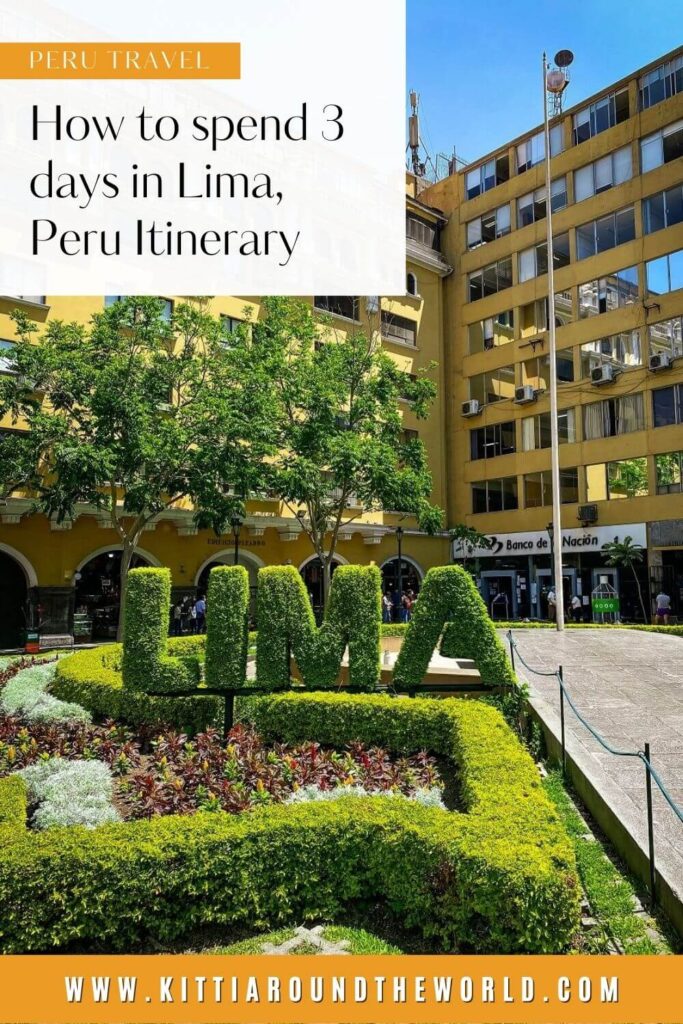

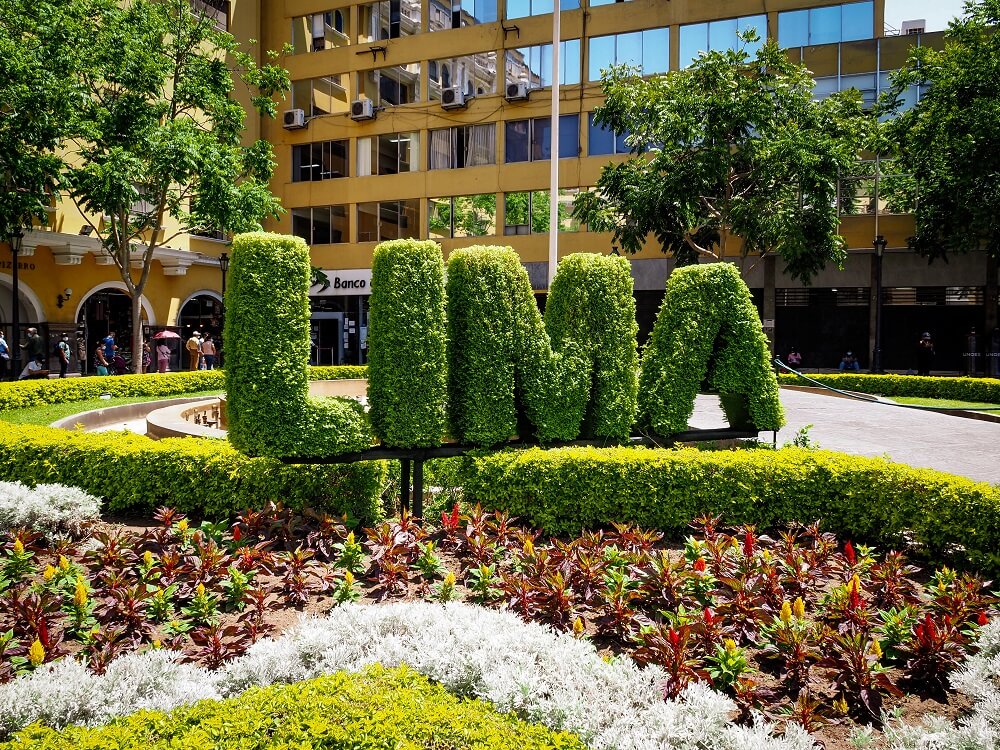
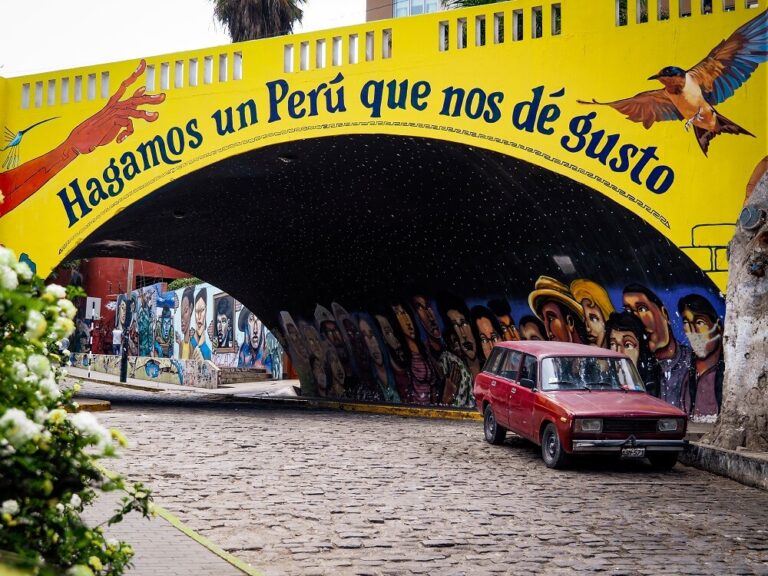
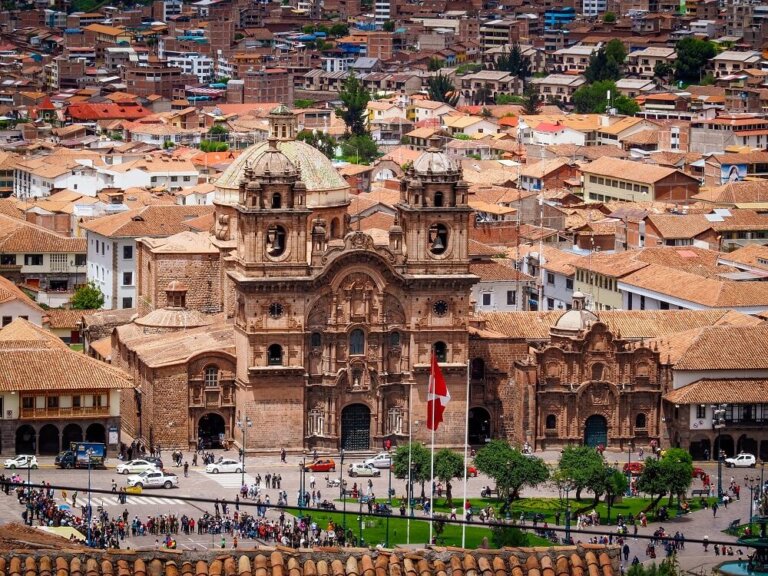
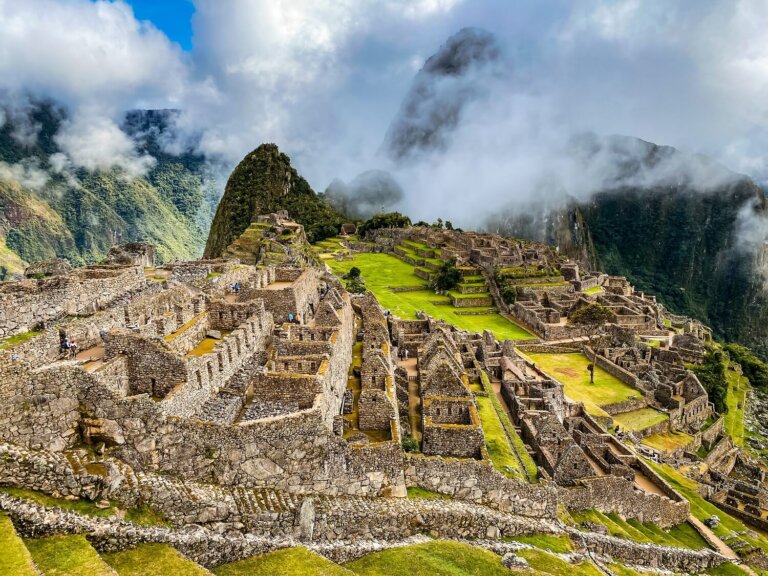
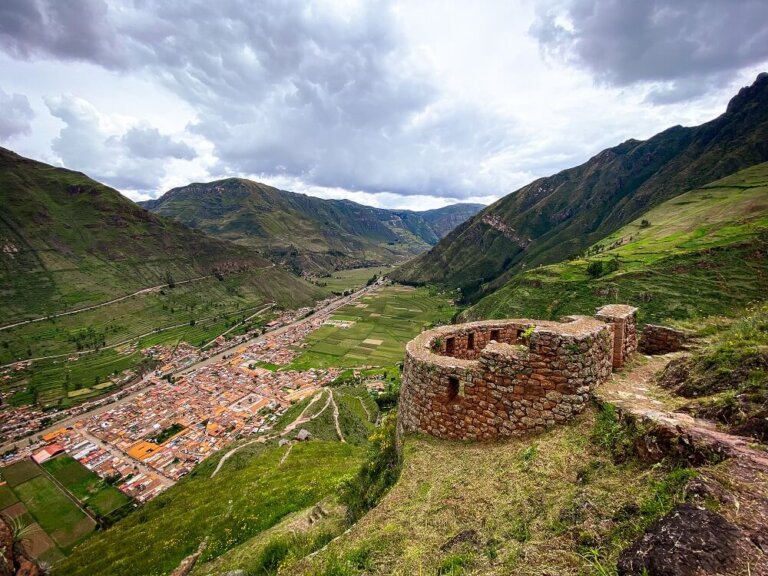
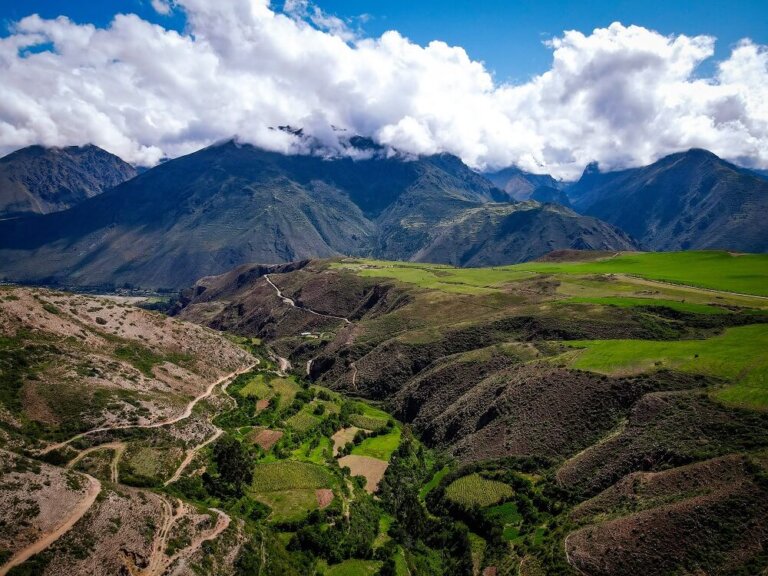
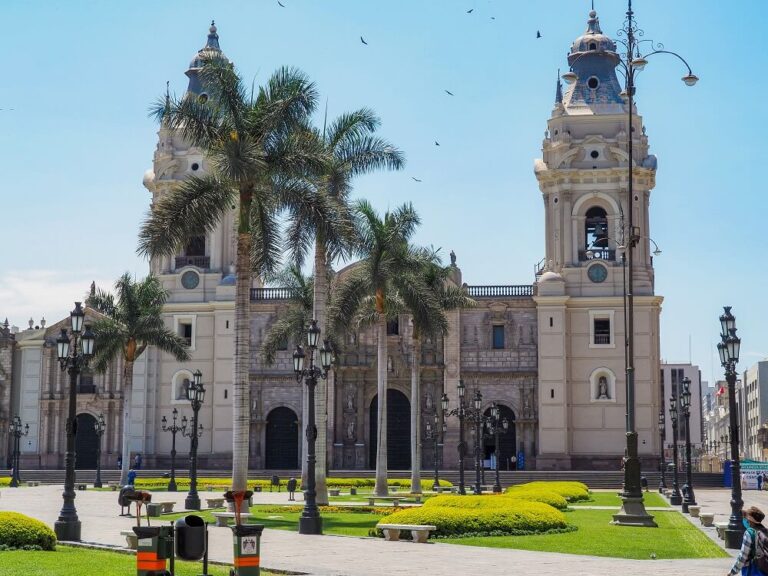
Thanks for sharing! As always your guide is packed with really useful information!👏🙂
Thank you Karan, we’re glad you found this post useful 🙂